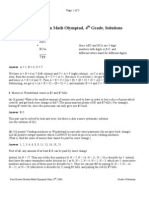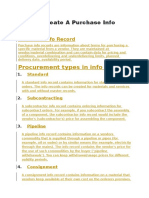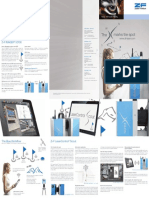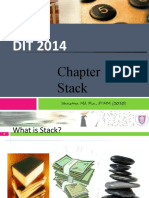5.5 Radio Resource Allocation
This section describes the procedures enabling the assignment of radio resource to the mobile and in consequence the establishment of a TBF. These procedures correspond to the transition from packet idle mode to packet transfer mode. The procedures used for the report of measurements are also detailed.As described in Chapter 3, two kinds of TBF can be established:
•
Uplink TBF assigning uplink radio resource to the mobile with a downlink signaling channel;
•
Downlink TBF assigning downlink resources on shared PDCHs with an uplink signaling channel.Two simultaneous TBFs assigned to the same MS in opposite direction (uplink and downlink) are said to be concurrent.5.5.1 Uplink TBF EstablishmentThe mobile triggers the establishment of an uplink TBF for three major reasons:
•
To perform an uplink data transfer;
•
To answer a paging;
•
To perform a GMM procedure (e.g., RA update procedure and GPRS attach procedure).5.5.1.1 RACH/PRACH PhaseAccess RequestThe mobile triggers the establishment of an uplink TBF:
•
By sending a CHANNEL REQUEST message on the RACH when there is no PBCCH in the cell;
•
By sending a PACKET CHANNEL REQUEST message on the PRACH if PBCCH is present in the cell.The mobile may also request the establishment of an uplink TBF during a downlink TBF on PACCH.There are two codings for the PACKET CHANNEL REQUEST message. One format allows the transport of 8 bits information and the other one 11 bits information. The CHANNEL REQUEST message carries 8 bits of information.The CHANNEL REQUEST message is used for both circuit-switched access and packet access. This message contains 8 bits of information, allowing a limited number of uplink combinations. As some of the combinations are reserved for GSM access, fewer combinations are available for packet access.On PRACH, no circuit-switched access can occur. All the bit combinations of 8 or 11 bits of information within the access message are reserved for packet access only. Thus, access through the PRACH allows the mobile to send more precise information on its capability and requirements in order to establish as quickly as possible an uplink TBF.
Note On the RACH, the MS is unable to indicate its multislot capability in the CHANNEL REQUEST message. In order to use its maximum capability, it will be necessary to establish a TBF in two phases. The other possibility is to start the uplink transfer using only one time slot; once the mobile is identified, the BSS can then request the mobile capabilities to the SGSN and finally extend the allocation when they will be received. Even if the multislot capability of the mobile is given to the network during the GPRS attach procedure, the BSS does not have this information when it receives the access request. This information is only available at the SGSN side. The two-phase access procedure is described in the following sections.
As shown in Figure 5.5, the CHANNEL REQUEST and PACKET CHANNEL REQUEST messages are composed of two parts:
•
One establishment cause;
•
One random reference.
Figure 5.5: Channel request and packet channel request format.The random reference length is from 2 to 5 bits depending on the establishment cause.The random reference reduces the probability that two MSs requiring the establishment of a TBF send exactly the same message in the same RACH or PRACH occurrence. This could happen, but the problem is solved by the contention resolution procedure described later.When the MS requests the establishment of an uplink TBF, it randomly chooses the few bits that are sent within the random reference field of the access request message. When the network assigns the resources to the mobile it returns the request reference (random reference, establishment cause, and FN in which the AB was received) in order for the MS to correlate the assignment and the request. If two mobiles have sent an AB at the same time using different request references, the one that is not addressed by the returned request reference value will abort the access procedure.The two basic procedures used for the establishment of an uplink TBF are:
•
The one-phase access procedure;
•
The two-phase access procedure.Which type of procedure is used is indicated or deduced from the establishment cause of the access request message.The different establishment causes that can be signaled by the mobile within the PACKET CHANNEL REQUEST message are:
•
One-phase access;
•
Two-phase access;
•
Short access (used when the mobile wants to transfer an amount of data that is less than 8 RLC/MAC blocks);
•
Page response (used in response to a paging);
•
Cell update (used to trigger a cell update procedure);
•
MM procedure;
•
Single block without TBF establishment (used to send a measurement report to the network).For the short access, page response, cell update, and MM procedure access types, the TBF is established using one-phase access.Within the CHANNEL REQUEST message, only two establishment causes are possible for packet access: the one-phase access and the single-block packet access. This last one is used to initiate the two-phase access procedure.When the mobile requests a short access, one-phase access, or two-phase access using an 11-bits PACKET CHANNEL REQUEST message, it has to indicate the radio priority of the TBF. The highest radio priority is indicated when the TBF is used for signaling purposes.If the mobile wants to establish a TBF in the RLC unacknowledged mode, it must request a two-phase access procedure. By default, the one-phase access requests a TBF in RLC acknowledged mode.The two-phase access procedure is longer than the one-phase access, as it requires the exchange of four messages (see section below) rather than two as in the one-phase access.The advantage of the two-phase access is that it allows the mobile to give more precision on its capabilities and requirements. As previously mentioned, during a one-phase access on the RACH, the mobile cannot provide its multislot capability. So in case of long uplink TBF, it is interesting for the mobile to request a two-phase access allowing a higher throughput thanks to the allocation of more time slots in uplink. On PRACH, the mobile can indicate its multislot class for a one-phase access within the PACKET CHANNEL REQUEST message.
Access Persistence Control on PRACHIt could happen that two MSs try to access the network at the same time and send their ABs on the same PRACH occurrence. In this situation, a collision is detected at the BTS side and if the two ABs are received with approximately the same power, neither of the two ABs is decoded. The access persistence control allows that the two mobiles avoid retransmitting ABs in the same PRACH occurrence in their next attempt. For that the occurrence in which the mobile will send the next AB is randomly determined. This mechanism is controlled dynamically by the network through the broadcast of access persistence control parameters on the PBCCH and PCCCH. The control of access persistence on PRACH is used to limit the collision probability on this channel.The parameters involved in access persistence control are listed below.
•
MAX_RETRANS indicates the maximum number of PACKET CHANNEL REQUEST message retransmissions the mobile is allowed to do.
•
PERSISTENCE_LEVEL is a threshold whose usage is described below. The range of this parameter is {0, 1, 2, ..., 14, 16}.
•
S indicates the minimum number of PRACH occurrences between two consecutive PACKET CHANNEL REQUEST messages.
•
TX_INT defines the spreading interval (in terms of PRACH occurrences) of the random access.Whenever the mobile attempts to send a PACKET CHANNEL REQUEST message, it has to draw a random value with uniform probability distribution in the set {0, 1, 2, ......., 15}. The MS is allowed to transmit a PACKET CHANNEL REQUEST message if the random value is greater than or equal to PERSISTENCE_LEVEL. The next PRACH occurrence in which the MS attempts to send a PACKET CHANNEL REQUEST message is determined by the parameters S and TX_INT. This is illustrated in Figure 5.6. After MAX_RETRANS + 1 attempts to send a PACKET CHANNEL REQUEST message, the mobile is not allowed to transmit any more access messages.
Figure 5.6: Access persistence control on PRACH.Note that the PERSISTENCE_LEVEL and MAX_RETRANS parameters depend on the radio priority of the TBF. Four different radio priorities exist. Four values for each two parameters are broadcast by the network. The mobile chooses the one corresponding to the radio priority of the TBF it wants to establish.Depending on the PRACH load and the number of collisions detected on the PRACH, the network can adjust the different access persistence control parameters, in order to regulate the load on PRACH and reduce the number of collisions. This ensures a constant throughput on the PRACH.In order to reduce the load on the PRACH, the network can also forbid access to mobiles belonging to some access control classes. The access control class is a subscriber parameter. It is used to favor some subscribers in relation to others for accessing the network. The parameter ACC_CONTR_CLASS, which is broadcast on PBCCH, indicates which access control classes are allowed to access the network.5.5.1.2 Uplink TBF Establishment on CCCHWhen PBCCH is not present in the cell and a mobile in packet idle mode wants to establish an uplink TBF, it performs access on CCCH.One-Phase Access Procedure on CCCHFigure 5.7 describes the scenario for one-phase access uplink TBF establishment on CCCH. This procedure allows the allocation of only one time slot to the MS, even if its multislot class would have allowed more. This is due both to the impossibility of signaling the multislot class within the CHANNEL REQUEST message and to a limitation in the length of the IMMEDIATE ASSIGNMENT message.
Figure 5.7: One-phase access establishment scenario on CCCH.The MS initiates this procedure by sending a CHANNEL REQUEST message on the RACH. The CHANNEL REQUEST message contains the establishment cause and the random value as described in the previous section. The establishment cause for this procedure is one-phase access.Note that the network does not have to respect the one-phase access request of the mobile and may force a two-phase access procedure.Upon reception of the CHANNEL REQUEST message, the BSS sends an IMMEDIATE ASSIGNMENT message on AGCH. This message contains the following information:
•
Request reference.
This includes the contents of the CHANNEL REQUEST message and the FN in which it was received.
•
TA parameters.
These include the TA index and the TA TN if continuous TA is implemented by the network and the initial TA. In this case the TA TN corresponds to the allocated PDCH.
•
Uplink TFI.
This parameter identifies the uplink TBF.
•
Channel coding command.
This parameter indicates to the mobile which coding scheme (CS-1, CS-2, CS-3, or CS-4) to use for uplink data transmission.
•
Packet channel description.
This indicates the allocated TN, the training sequence code, and the frequency parameters.
•
TLLI block channel coding.
This is used to indicate the coding scheme that must be used for data transmission during the contention resolution phase. The value could be CS-1 or the previous channel coding command. The contention resolution procedure is described later.
•
Power control parameters.
These indicate the downlink power control mode and the uplink power control parameters.
•
Medium access parameters.
These indicate the USF value in case of dynamic allocation and the fixed allocated bitmap in case of fixed allocation (refer to Section 3.3.2.3 for more details on the medium access methods).Note that if the initial TA is not provided, the MS must await the reception of a correct TA value given during the continuous TA procedure before starting to transmit.The assigned PDCH must be in the same frequency band as the BCCH, since the bands supported by the mobile are unknown at this time.The network may request an acknowledgment from the mobile. The acknowledgment is requested by setting the polling bit in the IMMEDIATE ASSIGNMENT message. If the polling bit is set to 1, the mobile sends a PACKET CONTROL ACKNOWLEDGMENT message on the assigned PDCH, in the uplink block specified by the TBF starting time parameter. In this case the TBF starting time is used to indicate when the assigned PDCH becomes valid and when the uplink block for PACKET CONTROL ACKNOWLEDGMENT message is sent. The TBF starting time indicates the FN in which the uplink TBF starts.The PACKET CONTROL ACKNOWLEDGMENT message is sent as either a normal RLC/MAC control block or as four consecutive identical ABs. The format of this message depends on the CONTROL_ACK_TYPE parameter value broadcast on BCCH or PBCCH.


























































































